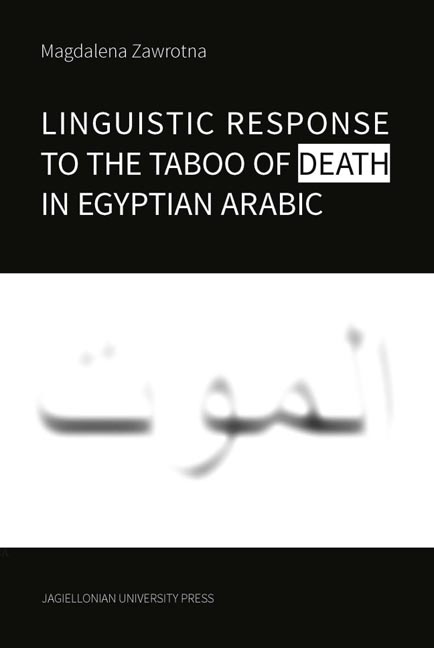Book contents
- Frontmatter
- Contents
- 1 Transcription system
- 2 Introduction
- 3 What is formulaicity?
- 4 Material
- 5 State of research
- 6 Structural notes
- 7 Qualitative analysis of death announcements, comments containing condolences and their responses
- 8 Recapitulation of the analysed material
- 9 Death and the agency of God
- 10 The taboo of death
- 11 Summary
- 12 Questions for further exploration
- Bibliography
- Miscellaneous Endmatter
8 - Recapitulation of the analysed material
Published online by Cambridge University Press: 14 October 2023
- Frontmatter
- Contents
- 1 Transcription system
- 2 Introduction
- 3 What is formulaicity?
- 4 Material
- 5 State of research
- 6 Structural notes
- 7 Qualitative analysis of death announcements, comments containing condolences and their responses
- 8 Recapitulation of the analysed material
- 9 Death and the agency of God
- 10 The taboo of death
- 11 Summary
- 12 Questions for further exploration
- Bibliography
- Miscellaneous Endmatter
Summary
In the previous chapters, the structure of the formulae used when speaking about death (announcing, acknowledging, reacting, and entering an interaction with a mourner) was presented. Some of their features, e.g., prefabricated language elements, were also discussed, including their variability. Formulaic language constitutes a relatively small percentage of death announcements, but it dominates the rest of the speech acts examined here. The death announcements researched, although only 20 randomly selected examples were analysed, follow many different models. Due to their diversity and the limited amount of material, no attempt was made to classify them, as any conclusions drawn this way would not be reliable. Analysing data obtained from sources other than CMC would probably produce different results. Al-Khatib and Salem (2011) studied Muslim and Christian obituaries in Jordanian Arabic newspapers. They discovered far more formalised structures in them. In their corpus, 65% of the obituaries were rounded off by a what is referred to here as a framing formula, appearing mostly in reactions to death announcements. In Christian obituaries representing 1% of their material, this formula was replaced with the Biblical verse: ʔarrab ʔaϛtaa wa ʔarrab ʔaxð. fal yakun ismu ʔarrabi mubarakan ‘The Lord gave and the Lord has taken away. Blessed be the name of the Lord’. Invocations to God and prayers for a place in heaven for the deceased accounted for 30% of their material, though qualitatively these were different from those appearing in the Egyptian CMC. The authors summarised their analysis as follows: “most of Jordanian obituaries included verses from the Holy Quran and the Bible as well as many prayers for the deceased. The opening and closing parts of the obituaries were verses from either the Holy Quran or the Bible. Invoking God to forgive the deceased and let him/her enter paradise was a common feature of Jordanian obituaries” (2011: 93). Obituaries in the newspapers have a more formalised structure than personal posts on private social media profiles. In terms of structure, the texts appearing in them tended to correspond to the comments to the posts in the corpus analysed in the current study. These answers not only appear in abundance, but also use largely formulaic language, mostly following the scheme described in Structural Notes. Reacting to death is based on group rituals: linguistic items appear in their expected places.
- Type
- Chapter
- Information
- Linguistic Response to the Taboo of Death in Egyptian Arabic , pp. 117 - 124Publisher: Jagiellonian University PressPrint publication year: 2021



